- Home
- Diane Duane
Spider-Man: The Venom Factor Omnibus
Spider-Man: The Venom Factor Omnibus Read online
CONTENTS
Cover
Novels of the Marvel Universe by Titan Books
Title Page
Leave us a review
Copyright
Book One: The Venom Factor
Dedication
Prologue
One
Two
Three
Four
Five
Six
Seven
Eight
Nine
Ten
Eleven
Twelve
Book Two: The Lizard Sanction
Dedication
Prologue
One
Two
Three
Four
Five
Six
Seven
Eight
Nine
Ten
Eleven
Twelve
Acknowledgements
Book Three: The Octopus Agenda
Dedication
Prologue
One
Two
Three
Four
Five
Six
Seven
Eight
Nine
Ten
Eleven
Acknowledgements
About the Author
Also Available from Titan Books
THE VENOM FACTOR
A MARVEL OMNIBUS
NOVELS OF THE MARVEL UNIVERSE BY TITAN BOOKS
Ant-Man: Natural Enemy by Jason Starr
Avengers: Everybody Wants to Rule the World by Dan Abnett
Avengers: Infinity by James A. Moore
Black Panther: Who is the Black Panther? by Jesse J. Holland
Captain America: Dark Design by Stefan Petrucha
Captain Marvel: Liberation Run by Tess Sharpe
Civil War by Stuart Moore
Deadpool: Paws by Stefan Petrucha
Spider-Man: Forever Young by Stefan Petrucha
Spider-Man: Kraven’s Last Hunt by Neil Kleid
Thanos: Death Sentence by Stuart Moore
Venom: Lethal Protector by James R. Tuck
X-Men: Days of Future Past by Alex Irvine
X-Men: The Dark Phoenix Saga by Stuart Moore
X-Men: The Mutant Empire Omnibus by Christopher Golden
X-Men & The Avengers: The Gamma Quest Omnibus by Greg Cox
ALSO FROM TITAN AND TITAN BOOKS
Marvel Contest of Champions: The Art of the Battlerealm by Paul Davies
Marvel’s Spider-Man: The Art of the Game by Paul Davies
Obsessed with Marvel by Peter Sanderson and Marc Sumerak
Spider-Man: Hostile Takeover by David Liss
Spider-Man: Into the Spider-Verse – The Art of the Movie by Ramin Zahed
The Art of Iron Man (10th Anniversary Edition) by John Rhett Thomas
The Marvel Vault by Matthew K. Manning, Peter Sanderson, and Roy Thomas
Ant-Man and the Wasp: The Official Movie Special
Avengers: Endgame – The Official Movie Special
Avengers: Infinity War – The Official Movie Special
Black Panther: The Official Movie Companion
Black Panther: The Official Movie Special
Captain Marvel: The Official Movie Special
Marvel Studios: The First Ten Years
Spider-Man: Far From Home – The Official Movie Special
Spider-Man: Into the Spider-Verse – The Official Movie Special
Thor: Ragnarok – The Official Movie Special
LEAVE US A REVIEW
We hope you enjoy this book – if you did we would really appreciate it if you can write a short review. Your ratings really make a difference for the authors, helping the books you love reach more people.
You can rate this book, or leave a short review here:
Amazon.com,
Amazon.co.uk,
Goodreads,
Barnes & Noble,
Waterstones,
or your preferred retailer.
Spider-Man: The Venom Factor Omnibus
Print edition ISBN: 9781789094596
E-book edition ISBN: 9781789094602
Published by Titan Books
A division of Titan Publishing Group Ltd
144 Southwark Street, London SE1 0UP
First edition: March 2020
10 9 8 7 6 5 4 3 2 1
This book is a work of fiction. Any references to historical events, real people, or real places are used fictitiously. Other names, characters, places, and events are products of the author’s imagination, and any resemblance to actual events or places or persons, living or dead, is entirely coincidental.
© 2020 MARVEL
Special thanks to Lou Aronica, Lucia Raatma, Eric Fein, Danny Fingeroth, Julia Molino, Ginjer Buchanan, Eileen Veith, Ken Grobe, Stacey Gittelman, Mike Thomas, Steve Behling, Steve Roman, Carol D. Page and the gang at Marvel Creative Services.
Original trilogy edited by John Betancourt & Keith R.A. DeCandido.
FOR MARVEL PUBLISHING
Jeff Youngquist, VP Production Special Projects Caitlin O’Connell, Assistant Editor, Special Projects Sven Larsen, Director, Licensed Publishing David Gabriel, SVP Sales & Marketing, Publishing C.B. Cebulski, Editor in Chief
Spider-Man created by Stan Lee and Steve Ditko.
No part of this publication may be reproduced, stored in a retrieval system, or transmitted, in any form or by any means without the prior written permission of the publisher, nor be otherwise circulated in any form of binding or cover other than that in which it is published and without a similar condition being imposed on the subsequent purchaser.
A CIP catalogue record for this title is available from the British Library.
THE VENOM FACTOR
Book One
THE VENOM FACTOR
Diane Duane
For all our friends at Baycon ’94 and Ad Astra ’94, Toronto
… who watched it happen
Thanks to Keith, who suffered, well, we know what
PROLOGUE
IT was very cold three hundred feet down, very dark; but not very quiet. Outside the skin of the sub, the noise of near-shore seas rumbled and clattered and moaned against the hull—a muted chainsaw rattle of engine noise from ships passing overhead, the clunk and burp of bells or horns from nearby and distant buoys, even the occasional soft singing moan of a whale going about its lawful occasions. The man in the center seat of the submarine’s bridge looked thoughtfully at his charts. He sighed at the thought of his upcoming leave and of the relative peace and quiet of being surrounded by air instead of water.
The spot where he sat was not really the center seat, of course. Not yet: his boat was still three years off its refit. Eventually all U.S. subs’ bridges would come to resemble the original one of a famous television starship, the circular design having eventually been appreciated by the powers-that-be as the best and most efficient presently available. But right now, the bridge of SSN-45, the USS Minneapolis, was still a tangle of panels and conduits arranged around the obstructive central column of the periscope. The captain’s chair was no plush overseeing throne, but a folding chair stuck under the lighted chart table: not very aesthetic, not very comfortable. It was not meant to be. Captains spent most of their time on their feet.
Right now, though, Captain Anthony LoBuono was sitting and didn’t care who saw him. He could not wait to get this boat into dock and out again. Eight days from now, after final unloading at Greenland, he would get his butt off her, and the back cargo section emptied out once and for all. Never again, he thought. Never again.
Realistically, though, he might be command
ed to carry such a cargo again, and he would take his orders and do as he was told. In fact (and the thought made him twitch) it occurred to Captain LoBuono that, since he had managed this mission well enough, he might easily be given the same task again at some later date.
He swore gently under his breath. He would not soon relish another week and a half like the last one. His crew were on edge, which was no surprise, for he was on edge: and such things communicated themselves, no matter how hard you tried to keep them under wraps. You should be grateful, he thought to himself. It’s one of the things that makes your crew as good at their jobs as they are. They hear you thinking, anticipate you, jump faster when they have to.
All the same, he would have preferred to pass on this last week’s case of nerves.
His Ex appeared at his shoulder. LoBuono looked up. Bass Lorritson—no one called him Basil, no one who didn’t want a drink later spilled on them “accidentally”—favored his captain with a calm look that fooled LoBuono not at all. “Coming shallow as scheduled at the north end of Hudson Canyon, sir,” he said. “Do orders mandate a specific course, or are they letting you play this one by ear?”
LoBuono smiled grimly. “We’re inside the limit,” he said, “and safely under the birds by now. No mandate, except to avoid the Hudson Canyon/Barnegat lanes—too much routine traffic there. Plot us in toward the Coast Guard beacon at Democrat Point, and then take your preferred route to the Navy Yards.”
Bass raised his eyebrows, thought a moment. “Jones Inlet,” he said, “East Rockaway Inlet, Rockaway Point, Ambrose Light, Norton Point, Verrazano Narrows Bridge, and up.”
LoBuono nodded. “Don’t stop to pay the toll this time. How’s the tide at Ambrose?”
“About three knots, the CG says.”
The captain nodded. “Coast-creeping. I guess it suits the situation. Call Harbor Control and give them our ETA. Then call New York Yards Control and tell them I want that stuff waiting at the dock and loaded no more than fifteen minutes after open hatches.”
“Yes, sir.”
“I’m not fooling around, Bass. I don’t want to linger.”
“I’ll tell them so, Captain.”
“Go.”
Bass went. Captain LoBuono got up and stepped over to the periscope. “Depth,” he said.
“Two hundred, Captain,” said Macilwain on the number-two radar. “Periscope depth in half a minute.”
LoBuono waited, staring at the shiny scarred deck-plates. It seemed about a hundred years, now, since he had reported aboard the Minneapolis at Holy Loch after returning from his last leave and had been handed the sealed envelope. That aspect of his life he was used to: usually a whole looseleaf binder full of mission info stamped “SECRET,” which in the present scheme of things normally meant “not very.” But this envelope had not been the usual color, but an eye-rattling air-rescue orange, and it had had the new barcoded utter-security seals in it. Two sets of seals: one for the envelope itself, and one for a package which had been waiting on a lowloader by the dock. The package had been about eight feet square, a metal case with a very large cordon of armed and jumpy MPs around it—an escort which, in a lighter mood, would have suggested to Captain LoBuono that possibly the President himself was inside. As it was, he went down belowdecks, swiped the barcode through the reader in his quarters, opened the envelope, swiped the barcode on the inside envelope, opened that, sat down, and read.
And swore. But then, as now, there was nothing he could do about it, any of it—not the envelope, the box, or either of their contents. The box was loaded on, and he had told his crew not to ask questions about it because he had no answers for them. Then Minneapolis had headed out.
The door of the secure-cargo compartment way in the back, where the uneasy MPs had deposited the box, was now sealed with the second set of barcode seals, and a sign which one of the MPs had slapped on the door at eye-height: “DANGER—RADIATION,” with the familiar three triangles, red on yellow. At the bottom of this sign, over the past few days, some wit had scrawled in ballpoint, “SO WHAT ELSE IS NEW?” Whoever had done it had a point: Minneapolis was an attack sub and carried nuclear-tipped torpedoes—what her crew did not know about radioactives would fit in a very short book indeed.
“FULL ALERT,” his orders had said, “HOLY LOCH TO GREENLAND: TRIPLE WATCHES: RADIO SILENCE UNTIL COASTAL WATERS NY.” And so it had been done. LoBuono had known what effect this would have on his crew. They were an intelligent and stable bunch—no news there: neither the stupid nor the unstable were allowed on nuclear-armed submarines. But it made them uneasy to be carrying out secret orders. It made them feel as if their superiors didn’t trust them, and they didn’t know which superiors to be annoyed with—the brass higher up or their captain.
For his own part, Captain LoBuono knew how they felt. His annoyance was more focused. Without knowing what he carried, it was hard for him to take all possible and prudent precautions, thus jeopardizing the mission itself.
“Periscope depth, sir,” said the number-two radar man.
“Thank you, Mr. Macilwain,” LoBuono said. “Up periscope.”
It slid up before him, and he draped himself over its handles and peered into the hood. Someone had left the starlight augmenter on, so that everything in view glared green. He hmphed to himself, toggled it off, and looked again.
Dead ahead of them he could see Ambrose Lightship, some six miles away, rocking slightly in the offshore swells despite its anchoring. He looked north toward Norton Point, got a brief glimpse of Coney Island, walked around the ‘scope housing a little, gazing to northeastward, and saw the brick tower in the middle of Jones Island, with its pointed bronze-green top. He smiled slightly. It was a long time since he had pestered his folks on summer weekends to take him down to Zachs Bay near that tower, where he could sail his toy boats in the quiet water near the Playhouse—
“… don’t know,” he heard someone whisper off to one side, partly behind him.
“You think he does?” the whisper came back from down the Bridge.
Silence: probably the sound of a head being shaken. “I think that’s what’s steaming him these last couple days—”
This was the other thing Captain LoBuono hated about sealed-orders runs: the rumor mill that started running when the engines did and didn’t stop until some time during the crew’s next leave, if then.
“I heard different.” Another voice, whispering too.
“What?”
“Some kind of thing they’re studying. Something they found.”
“Thing? What kind of thing?”
Captain LoBuono swung gently around so that his back was broadside-on to the conversation. He looked idly south toward empty water, then swung slowly around to gaze westward, spotting the familiar landmarks: the Coast Guard observation towers on Sandy Hook, and the Sandy Hook Light, oldest in continuous use in the country; the low rise of the Highlands of Navesink, marking the southern boundary of New York Harbor.
“I don’t know. Something—not from here.”
A little further around LoBuono swung, toward the conversation. It stopped.
“Verrazano Narrows,” his Ex said.
“So I see,” said Captain LoBuono, looking through the periscope at the graceful upstrokes of steel and curves of cable. “Got five bucks, Bass?”
There were smiles around the bridge. Three trips ago, they had come this way, and Bass had been easing Minneapolis out of harbor in storm weather while LoBuono attended to paperwork business in his quarters. A nasty unsuspected riptide had pushed Minneapolis into one of the stanchions of the Narrows Bridge. She had taken no damage worse than a good scrape on the hull, but Bass had been mortified, and the crew had teased him good-naturedly and offered to pay the toll for him if he wanted to get onto the Bridge that much.
“Fresh out of small bills, Captain,” Bass said.
“Good man. Sound surface. Steady as she goes, then twenty degrees starboard.”
“Sounding surface.” The usua
l clangor began. “Twenty degrees aye. Yard Control says our packages are loaded and waiting for us, Captain.”
“Very well, Mr. Lorritson. Surface. Anything from Harbor?”
“Routine traffic west of Gowanus Bay,” Macilwain said. “We pass eastward, starboard of the separation zone. Course to Buttermilk Channel and north to the Yards is clear.”
“Proceed,” Captain LoBuono said.
They sailed on up out of the Lower Bay and into New York Harbor proper, taking their time. LoBuono turned a bit again to admire the view of the skyscrapers towering up over lower Manhattan, or to seem to. He heard no more talk behind him, though, except the normal coming-to-berth chatter. “Tide’s at two,” said Loritz, the second navigator, one of the crewmen who had been whispering before.
“Mind the Spider,” Bass said. LoBuono’s mouth quirked. The treacherous crosscurrents of that name, which ran to the starboard of Governor’s Island, were what had caused Bass his old trouble with the bridge. But this time of day, with high water still two hours off, they were at their least dangerous.
Without more incident they sailed on up through the East River and under the Brooklyn Bridge. Traffic on the bridge slowed down as motorists, seeing the Minneapolis’s sail, braked to stare and point. Captain LoBuono smiled slightly with pride, but the pride did nothing to ease his tension. The sooner we’re loaded and out of here, he thought, the better I’m going to like it.
A few minutes later they passed under the Williamsburg Bridge, where the same slowing occurred, and then turned slightly out of the main East River “deepwater” channel.
“Wallabout Bay,” the second navigator said.
The Navy Yards at last. “Down scope. Pop the top,” Captain LoBuono said. “Mooring crew to the aft hatch. Down to one knot, Bass.”
“One knot aye. Mooring crew reports ready.”
“What’s our berth?”
“Sixteen.”
“Take us in.”
They crept slowly through the outer Shipyard harbor mole. Not much business came this way anymore, what with defense cutbacks and other curtailments on spending: the Brooklyn Navy Yards, once the talk of the world, full of half-laid keels and the rattle of rivets and air-hammers, were now mostly home for mothballed ships and massive lifting cranes whose hooks swung empty in the wind off the Harbor. Still, the Navy used the Yards for occasional nontechnical repairs and provisioning work.

 The Book of Night With Moon
The Book of Night With Moon A Wind From the South
A Wind From the South A Wizard Abroad, New Millennium Edition
A Wizard Abroad, New Millennium Edition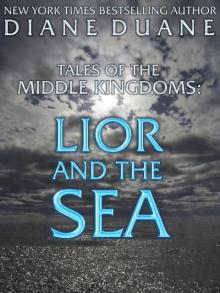 Lior and the Sea
Lior and the Sea Uptown Local and Other Interventions
Uptown Local and Other Interventions High Wizardry New Millennium Edition
High Wizardry New Millennium Edition Games Wizards Play
Games Wizards Play Wizard's Holiday, New Millennium Edition
Wizard's Holiday, New Millennium Edition So You Want to Be a Wizard, New Millennium Edition
So You Want to Be a Wizard, New Millennium Edition The Door Into Sunset
The Door Into Sunset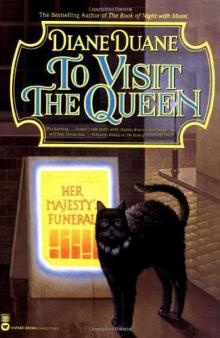 To Visit the Queen
To Visit the Queen A Wizard Abroad
A Wizard Abroad Not on My Patch
Not on My Patch The Door Into Shadow
The Door Into Shadow The Door Into Fire
The Door Into Fire A Wizard Alone New Millennium Edition
A Wizard Alone New Millennium Edition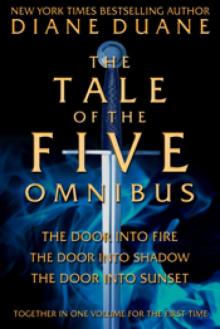 The Tale of the Five Omnibus
The Tale of the Five Omnibus The Wizard's Dilemma, New Millennium Edition
The Wizard's Dilemma, New Millennium Edition The Big Meow
The Big Meow Wizards at War, New Millennium Edition
Wizards at War, New Millennium Edition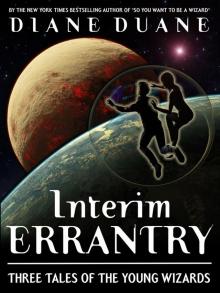 Interim Errantry
Interim Errantry Omnitopia: Dawn
Omnitopia: Dawn High Wizardry
High Wizardry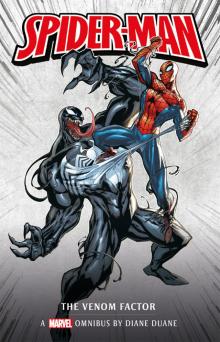 Spider-Man: The Venom Factor Omnibus
Spider-Man: The Venom Factor Omnibus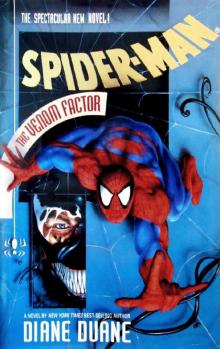 Spider-Man: The Venom Factor
Spider-Man: The Venom Factor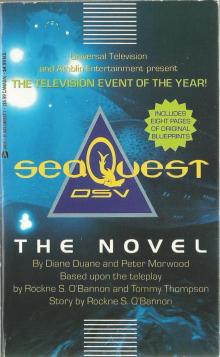 Seaquest DSV
Seaquest DSV How Lovely Are Thy Branches
How Lovely Are Thy Branches So You Want to Be a Wizard
So You Want to Be a Wizard Midnight Snack and Other Fairy Tales
Midnight Snack and Other Fairy Tales Stealing the Elf-King's Roses
Stealing the Elf-King's Roses Interim Errantry 2: On Ordeal
Interim Errantry 2: On Ordeal Raetian Tales 1: A Wind from the South
Raetian Tales 1: A Wind from the South Starrise at Corrivale h-1
Starrise at Corrivale h-1 The Wizard's Dilemma
The Wizard's Dilemma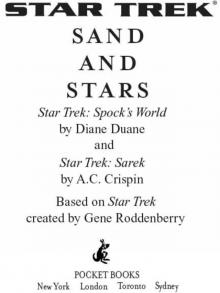 Sand and Stars
Sand and Stars How Lovely Are Thy Branches: A Young Wizards Christmas
How Lovely Are Thy Branches: A Young Wizards Christmas On Her Majesty's Wizardly Service fw-2
On Her Majesty's Wizardly Service fw-2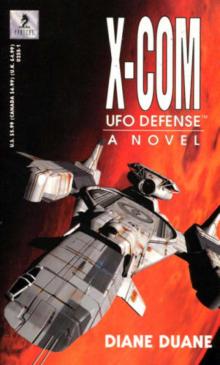 X-COM: UFO Defense
X-COM: UFO Defense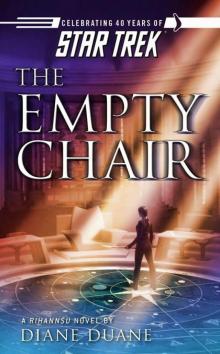 Star Trek: The Original Series: Rihannsu, Book 5: The Empty Chair
Star Trek: The Original Series: Rihannsu, Book 5: The Empty Chair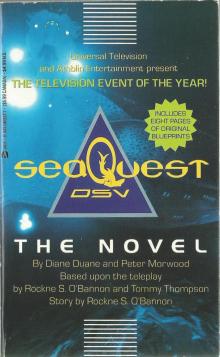 seaQuest DSV: The Novel
seaQuest DSV: The Novel Stealing the Elf-King's Roses: The Author's Cut
Stealing the Elf-King's Roses: The Author's Cut Not On My Patch: a Young Wizards Hallowe'en Story
Not On My Patch: a Young Wizards Hallowe'en Story A Wizard Alone yw[n&k-6
A Wizard Alone yw[n&k-6 The Bloodwing Voyages
The Bloodwing Voyages Games Wizards Play (Young Wizards Series)
Games Wizards Play (Young Wizards Series) The Book of Night with Moon fw-1
The Book of Night with Moon fw-1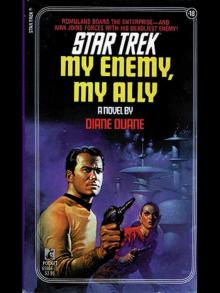 My Enemy My Ally
My Enemy My Ally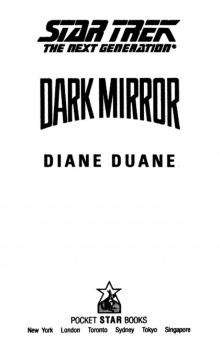 Dark Mirror
Dark Mirror Star Trek: The Original series: Rihannsu: The Bloodwing Voyages
Star Trek: The Original series: Rihannsu: The Bloodwing Voyages Deep Wizardry yw[n&k-2
Deep Wizardry yw[n&k-2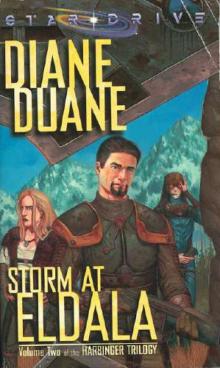 Storm at Eldala h-2
Storm at Eldala h-2